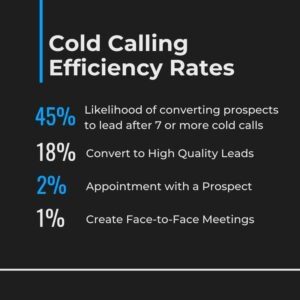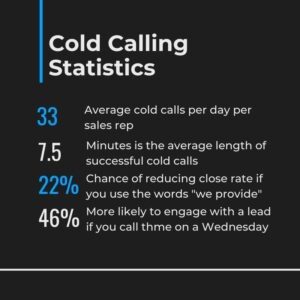Cold Calling Tactics
There are hundreds of different cold calling tactics out there that sales reps can use, but what matters the most is the hustle and effort you’re willing to put in. Plus having nice sales coaching software always helps!
Oh, the joys of cold calling. You constantly hear “cold calling is dead”, but unfortunately for most, it’s not. Cold calling can actually benefit your company if you have the right talk tracks and tactics in order to drive more sales. Getting comfortable with rejection is key, but also having the right sales coaching software (aka not just any sales enablement tool) is just as important.
Without software, sales development reps jobs become even more difficult.
Why not give reps an advantage over their competitors with real-time sales coaching software?

Being a Successful Cold Caller
With the right mindset, the right tools, and the right script, cold calls are an excellent way to prospect new leads and encourage them to book a meeting.
But it’s very important to remember that call scripts should be used as talking points… not actual scripts. Sales and cold calling is about building relationships and providing value to prospects, not selling them on the product or service you’re pitching.
But anyway, let’s dive into the specific cold calling tactics that have helped our reps succeed.
Tactic #1: Catch the prospect’s attention within 5 seconds
The introduction is one of the most important parts of a cold call. If you can’t capture their attention within 5 seconds, the prospect will either hang up or tell you they’re not interested.
What story are you telling with your cold call? Are you asking a question to start the call?
Here are some of the best introductions we’ve heard:
- How’ve you been?
- This is a cold call and let me tell you why it’s different…
- I only have a minute, but…
Tactic #2: Provide value
Educate, don’t interrogate. Providing value to your prospects shows them you did research and you have a purpose behind the call. You’re looking to build a relationship, not immediately try to marry them (aka get them to sign a contract).
What can your company provide to prospects? Do you have data or insights you can show them, do you have case studies, etc.?
If you tell people something they didn’t know, they are more likely to listen to you and see what your product or service offers.
For example, when we are prospecting we give data about what sales coaching and call coaching can do to improve your team.
- When qualifying questions automatically get marked off from voice recognition, your sales development reps are 45% more likely to ask all questions instead of skipping them.
- When a prospect states an objection like “competitors” for example and a prompt gets shown to reps of how to handle competitor objections, they are 68% more likely to overcome that objection instead of lose the prospect.
Tactic #3: Keep it short or keep it long?
Every sentence you utter on a cold call should serve one purpose. That is to get the listener to listen to your next sentence. So choose your words carefully.
When it comes to call length, it depends. We’ve seen studies show that the longer the call the better. But you also need to be respectful of people’s time. If they say anything about being busy, find a way to get another call on the calendar so they can get on with their busy day.

Tactic #4: Keep it conversational
As mentioned above, cold calling is about building relationships. It’s about creating trust with the prospect so they are more likely to move forward with becoming a customer.
The hardest part of cold calling is the objections. It doesn’t matter how much you practice them, it can always leave you speechless. That’s why we love using real-time sales coaching software because it prompts our reps with bullet points of how to respond. Then they can put their own personality behind it!
Overcoming objections should be a normal conversation and shouldn’t be scripted with memorizing objections. Be truthful and be human.
You’ll be surprised how many more prospects you convert because they relate to you instead of others who sound so robotic.
Tactic #5: Leave compelling voicemails
With fewer people picking up the phone nowadays, voicemails are one of the ways to still get in front of the prospect.
Remember you need to provide value. We’ve said that numerous times now.
Voicemails need to be concise but powerful enough to get a callback.
Saying key phrases like the ones below can help you secure that callback.
“We haven’t spoken before, but your competitor ______ has benefited from some of the _____ that my company offers. I wanted to see if you were interested in learning more.”
“I see that your company is currently doing this, but have you ever thought about trying something like _____ instead? I’d love to share more of the benefits with you”.
“It looks like you’re currently using _____ (ex: sales enablement tool), are you currently happy with that? Do you feel like it’s saving you time each day?”
Trying to relate to show that you understand the pain points of your prospects will get them thinking. Remember most people don’t know what they’re missing out on, they would rather just get away from their current problem.
What Now?
You’re probably reading as much as you can around cold calling tactics and tips to help improve either yourself or your team. That’s great!
Now if you want something really game-changing, it’s time to take a look at your tech stack. What sales tools does your team currently have or even use? What is the ROI of those tools?
If you can’t answer that, then it’s time to do some research.
Software like real-time sales coaching software is a game changer. Goodbye to the days of the old school sales enablement tool and hello real-time! It’s like taking all of the knowledge from your top sales development reps and adding it to a live feed that displays based on the prospects’ responses.
It’s pretty dang cool.
